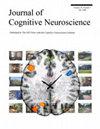P1, N170, and N250 Event-related Potential Components Reflect Temporal Perception Processing in Face and Body Personal Identification
IF 3.1
3区 医学
Q2 NEUROSCIENCES
引用次数: 0
Abstract
Human faces and bodies represent various socially important signals. Although adults encounter numerous new people in daily life, they can recognize hundreds to thousands of different individuals. However, the neural mechanisms that differentiate one person from another person are unclear. This study aimed to clarify the temporal dynamics of the cognitive processes of face and body personal identification using face-sensitive ERP components (P1, N170, and N250). The present study performed three blocks (face–face, face–body, and body–body) of different ERP adaptation paradigms. Furthermore, in the above three blocks, ERP components were used to compare brain biomarkers under three conditions (same person, different person of the same sex, and different person of the opposite sex). The results showed that the P1 amplitude for the face–face block was significantly greater than that for the body–body block, that the N170 amplitude for a different person of the same sex condition was greater than that for the same person condition in the right hemisphere only, and that the N250 amplitude gradually increased as the degree of face and body sex–social categorization grew closer (i.e., same person condition > different person of the same sex condition > different person of the opposite sex condition). These results suggest that early processing of the face and body processes the face and body separately and that structural encoding and personal identification of the face and body process the face and body collaboratively.P1、N170 和 N250 事件相关电位成分反映了面部和身体个人识别中的时间感知处理。
人的面孔和身体代表着各种重要的社会信号。虽然成年人在日常生活中会遇到许多新的人,但他们可以识别成百上千个不同的个体。然而,区分一个人和另一个人的神经机制尚不清楚。本研究旨在利用对脸部敏感的ERP成分(P1、N170和N250)来阐明脸部和身体个人识别认知过程的时间动态。本研究进行了三个区块(脸-脸、脸-身体和身体-身体)的不同ERP适应范式。此外,在上述三个区块中,ERP成分还用于比较三种条件(同一人、同性不同人和异性不同人)下的大脑生物标志物。结果显示,脸-脸区块的 P1 波幅明显大于身体-身体区块,同性不同人条件下的 N170 波幅仅在右半球大于同人条件下的 N170 波幅,N250 波幅随着脸部和身体性别-社会分类程度的接近而逐渐增大(即同人条件>同性不同人条件>异性不同人条件)。这些结果表明,脸部和身体的早期加工是分别处理脸部和身体的,而脸部和身体的结构编码和个人识别则是共同处理脸部和身体的。
本文章由计算机程序翻译,如有差异,请以英文原文为准。
求助全文
约1分钟内获得全文
求助全文
来源期刊
CiteScore
5.30
自引率
3.10%
发文量
151
审稿时长
3-8 weeks
期刊介绍:
Journal of Cognitive Neuroscience investigates brain–behavior interaction and promotes lively interchange among the mind sciences.

 求助内容:
求助内容: 应助结果提醒方式:
应助结果提醒方式:


